The result was simplicity itself.
First off, the yarn.
I went with James C. Brett Marble Chunky in Adobe. It took about 1 1/2 balls (200g) to complete the piece. It's a 100% acrylic, machine washable yarn with a wonderful feel. Absolutely gorgeous to work with. I choked a bit at the price of $15.99 per ball (what can I say... I'm a miser. ;-) ), but it was totally worth it!
Being a chunky yarn, I went with a size N/9.00 mm hook and started with a foundation chain of 60 inches. For the first row, I worked 10 sc for the cuff, then switched to dc until the last 10 stitches, where I switched back to sc.
The remaining rows were worked into the back loops only, sc into sc and dc into dc, until the cuff measured about 8 inches. It was more important to finish with an even number of rows than get an exact measurement. This is how it came out.
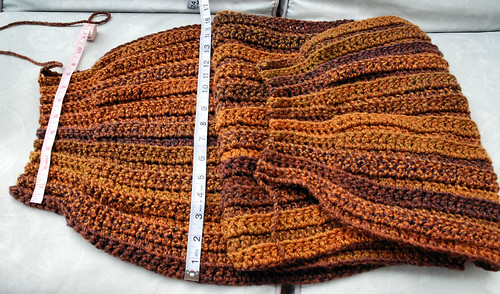
Like I said, simplicity itself.
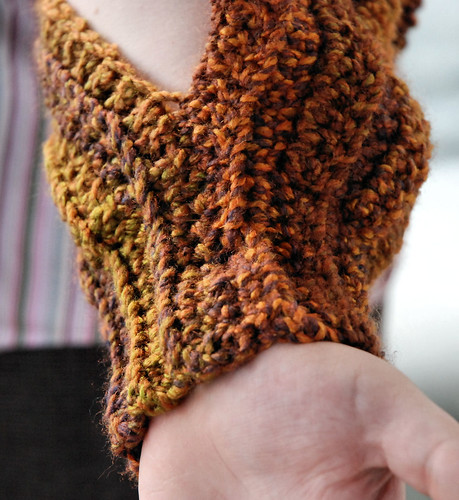
The seam of the cuff was worked so that it would be hidden in a "valley" on the right side. I lined up the stitches and whip stitched the sc area, plus 3 dc stitches.
I had considered working a contrasting row of stitches around the edges, but as we looked at it, we all thought it was just fine the way it was. Here are some different views of it.

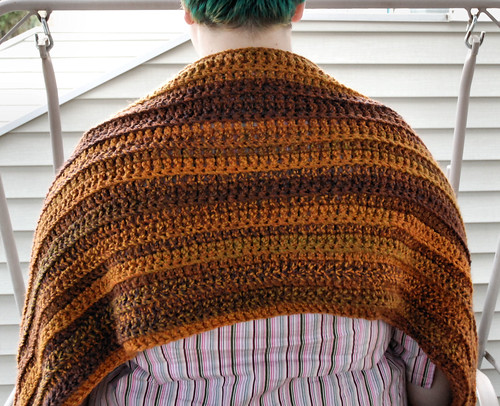
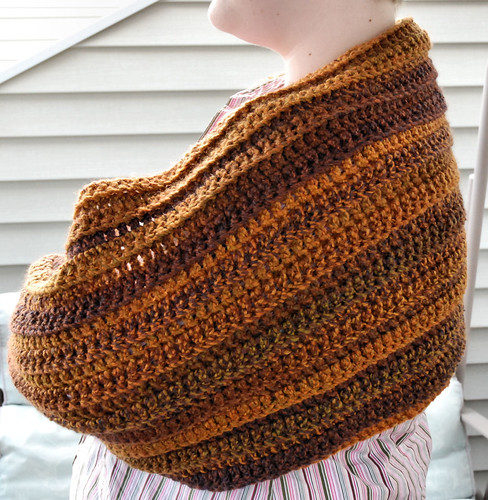
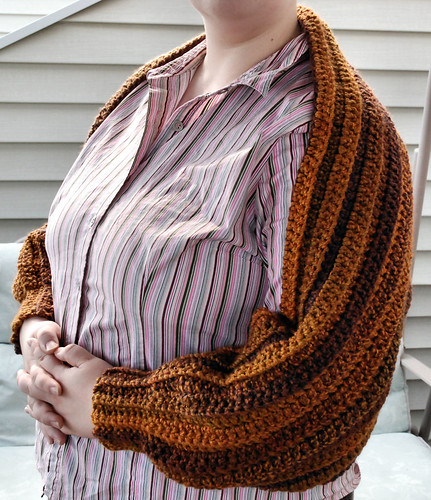
At this size, it would fit most adults, however it would be easy to customize for size, width and different yarns.
To customize the length, drape a tape measure over the shoulders where the wrap will rest and measure from wrist to wrist. Work the foundation chain to that length. Likewise, measure around the wrist to adjust the cuff size. Adjust the number of sc stitches to whatever width you'd like the cuff to be.
If you'd like it wider over the shoulder, use a smaller hook when working the cuff than the body.
Once the cuff is sewn closed, try working a contrasting colour around the edge in sc, working 2 sctog at the seams.
For a simple ruffle, start with a round of sc along the edge, starting near the cuff seam and working sctog at the seams. In the second round, work a few sc close to the seam (remembering to do 2 sctog at the seam), then a few hdc, making sure the number and type of stitches match on either side of the cuffs. Part way up the arm (wherever you'd like), switch to [dc, ch 1 dc] into each sc of the previous round.